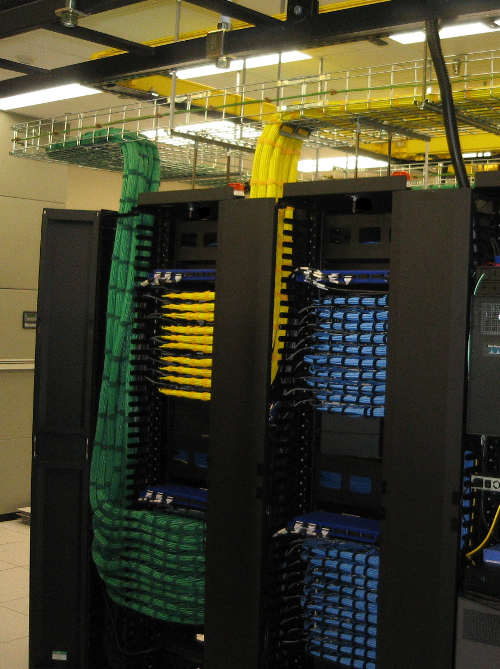Data Center Cabling
To connect any average computer, it is necessary to use many cables that are usually nasty arranged and hard to deal with. For data center, cables that connect various components are much more numerous. If those cables aren’t arranged in proper way, users could have problems with equipment maintaining, using of limited space in closets, and problems with existing cooling systems and reduced uptime.
 The goal of orderly cabling is to improve efficiency, aesthetic appearance, and to allow easily identifying and removing certain cables. Good cabling practices start with an elaborated labeling system that allows easier maintenance. System labeling modularity allows easy expansion and upgrades in the data center, but it is also necessary to provide a systematic layout of cables and good documentation. For large data centers, it is desirable to keep records in electronic form, which is possible with use of some specialized applications for the maintenance of infrastructure.
The goal of orderly cabling is to improve efficiency, aesthetic appearance, and to allow easily identifying and removing certain cables. Good cabling practices start with an elaborated labeling system that allows easier maintenance. System labeling modularity allows easy expansion and upgrades in the data center, but it is also necessary to provide a systematic layout of cables and good documentation. For large data centers, it is desirable to keep records in electronic form, which is possible with use of some specialized applications for the maintenance of infrastructure.
Good practice in cable management involves use of drawers for optical connections because this helps to avoid accidental damage of cables. Furthermore, it is useful to use cables that have a greater bandwidth than users currently need to reduce the total number of required cables. A smaller number of cables will allow better airflow around the equipment, which increases the efficiency of cooling systems. Another possibility is to use blade instead of the "classical" rack-mount servers because greater number of individual servers can be inserted in corresponding slots of blade server.
There are few options for cables layout from distribution zone to server closets: cable management in raised technical floor, cable management on cable trays attached to the servers racks or cable management on cable trays hanged on the ceiling. Additional information about data center cabling can be found at DATA CENTER Journal pages.



